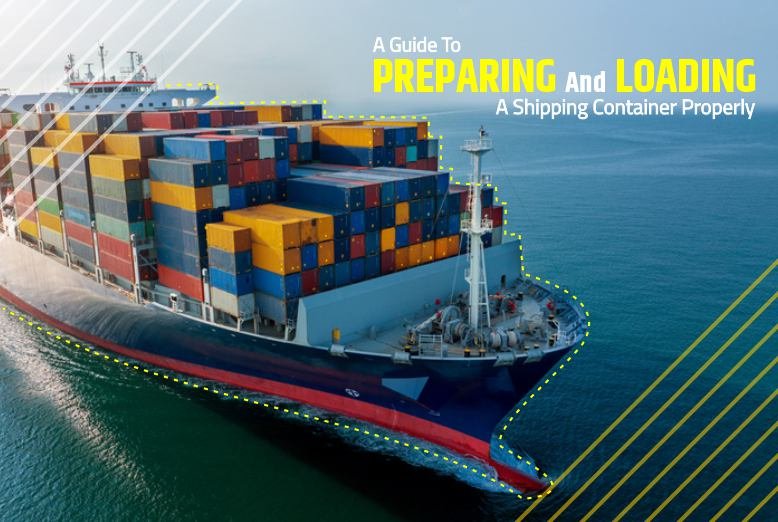Preparing and loading a shipping container isn’t a walk in the park. It’s usually a complex and lengthy process, given the many factors to consider. Preparing and loading a shopping container was more cumbersome decades ago as individuals had to load the goods manually. However, nowadays, technology has helped and simplified tasks by introducing software and equipment tools to ease the process. Moreover, technological advancement has brought numerous benefits, such as reduced transportation costs, safety maximization when loading and unloading goods, and help save time.
Proper preparation and loading of a shipping container are essential to avoid the risk of losing or damaging your goods, container, and potential accidents. Below are guidelines critical to consider when preparing and loading your shipping container.
1. Choose The Right Container
Before purchasing or hiring a shipping container, you should first know your needs. The container you choose will depend on the amount, weight, type of goods you intend to ship, ventilation, container liners, storage conditions, and temperatures. The container should also be clean, dry, and free from unpleasant smells, chemicals, and leaks. In addition, the doors should seal the container tightly, and the container’s floor should be clear and free from protruding objects that could damage your cargo.
2. Prepare Your Cargo For Loading

Before the shipping container is delivered, you must ensure that your cargo is properly packaged. This helps prevent the loss or damage of your goods during transit. To effectively package your cargo, consider the following tips:
- Use new cartons to pack loose items. Linen cartons are suitable for packing kitchen appliances and bedding, while cardboard cartons are suitable for general household items.
- Use bubble wrap or foam inside the cartons to prevent item breakage.
- Use crates for packaging goods with marble or glass. You can also wrap extra items with a blanket to offer protection during shipping.
- Use pallets when packing heavy items. Pallets offer easier handling and stability for heavy goods. However, ensure to check the pallet’s capacity to avoid overloading.
- Once you’ve securely packed your items and taped them correctly, label your cartons according to their contents for easy tracking. For instance, carton 1 contains kitchen appliances.
- Wrap your furniture and couches with a stretch wrap to prevent damage and dust during the shipment.
- Once you’re done packaging your items, arrange them in one room in the order that they will be loaded.
3. Load The Cargo In A Shipping Container
During the loading process, you may decide to load the cargo yourself with the help of friends or hire professionals to carry and load them. When loading it yourself, shipping companies usually give you two hours of loading before they start charging you. This is enough, considering that you had already prepared your cargo ahead of time. In addition, the following information will be helpful when loading the container:
- Thoroughly inspect the shipping container before loading your cargo. Ensure the container is clean and free from holes and sharp objects that may destroy your goods.
- As a simple rule of thumb, distribute the weight of your cargo throughout the container. This means loading the heavy items at the bottom throughout the floor area and the lighter items on top. This ensures the container isn’t heavy on one side. This applies to wet and dry items too. If you are loading those two types, remember to place the wet items at the bottom and the dry ones on top.
- Remember to place mattresses along the container walls to avoid damaging the goods during transit.
- Pack like items together, but pack the heavy ones at the bottom and the fragile ones at the top. Additionally, pack the items tightly to ensure there’s no movement. When you identify any spaces, look for smaller items to fill the space. You can even use empty boxes, blankets, or pillows to fill the spaces.
- If a vehicle, boat, or motorcycle is among the items being loaded, ensure to follow shipment regulations by draining gasoline and disarming the alarm and battery system to avoid accidents. Furthermore, you’ll need to design a plywood wall as a barrier between your vehicle and other items.
- Finally, put a box of essential tools at the back for easy reach in an emergency. The box may contain first aid tools, a screwdriver, a knife, gloves, and other tools you’ll need.
4. Secure The Cargo
After loading all the items, securing them is essential to ensure they remain in the intended position during transit. Not securing your cargo can cause movement inside the container, thus causing damage to your goods or shifting weights to one side. The best way to secure your items is by packing them tightly against each other to ensure there’s no space for movement.
You can also secure your items by tying them to the container sides with straps. There are usually rings on the container’s sides, floor, and ceiling to allow you to tie down your items. All you need to get is your straps. Additionally, since the container’s floor is made of wood, you can opt to create wooden boxes or braces to hold your items in place. Ocean freight is exposed to extreme compressive forces because of the rolling and pitching of the vessel. This means that not securing your items properly will cause significant damage to your cargo and the container.
5. Verify The Weight
According to shipment laws and regulations, you’re supposed to obtain the gross weight of the shipping container and submit it to the relevant terminals before the vessel transporting the containers can be prepared. You can use two methods to get the container’s gross weight. You can measure the container’s weight after loading the cargo or weigh individual items and add this to the container’s weight. Either way, you should weigh the gross weight before commencing transportation. Doing so allows you to make changes if the container is overweight or imbalanced.
Conclusion
When ocean shipments are involved, a shipping container should be prepared and loaded correctly. This means that the securing methods and materials used should be adequate to ensure the safety of your cargo, container, vessel, and any individuals involved in the shipment process.
ALSO READ: 7 Smart Tips To Reduce Transportation Logistics Costs













